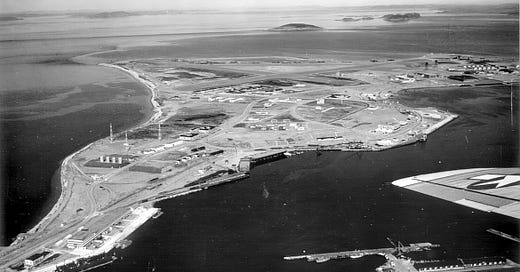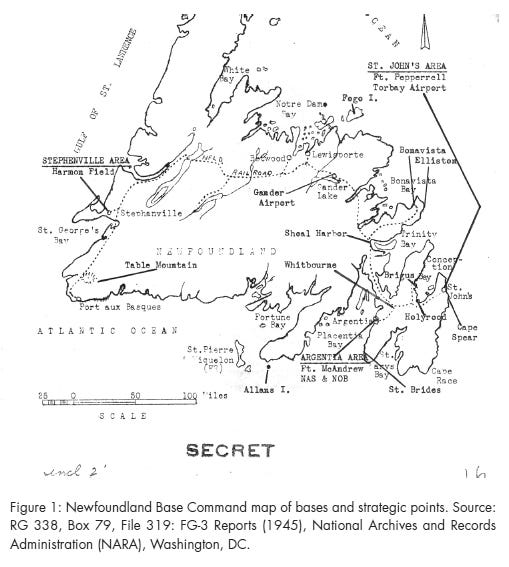The Secrets of Naval Station Argentia: A Hidden Legacy of Chemical, Biological, and Nuclear Experiments
The rugged shores of Newfoundland hold many secrets, but few are as shadowy as those surrounding Naval Station Argentia. A key military outpost during World War II, it later became a site for a series of covert American military tests in the 1960s that still haunt the region today. Whispers of chemical and biological weapon experiments, nuclear materials, and a possible cover-up weave through the air like the fog that blankets the Atlantic coast. But what really happened at Argentia, and what legacy has it left for the people of Newfoundland and Labrador?
A Deadly Cocktail of Chemicals: Project SHAD
Between 1963 and 1970, the U.S. Department of Defense launched a series of chemical and biological warfare tests under the code name Project SHAD (Shipboard Hazard and Defense). The tests, performed in the North Atlantic near Naval Station Argentia, were designed to evaluate how well U.S. Navy vessels could detect and protect themselves from chemical and biological attacks. Although the Cold War was in full swing, the U.S. military seemed to be preparing for an even deadlier type of warfare.
One of the most notorious tests was called Project “Copper Head”, where Bacillus globigii (BG)—a bacterium used as a biological tracer—was sprayed over the open sea from A-4 and C-47 aircraft. Alongside BG, a fluorescent zinc cadmium sulfide particle was also released. These tests were not limited to the ocean, as nearby towns and landscapes may have also been exposed to these substances. While the government assured citizens that Bacillus globigii was harmless, it has been linked to serious health issues, particularly in people with weakened immune systems.
Veterans who participated in these tests have reported health problems that they believe stem from their exposure to these biological agents. Jack Alderson, a retired Navy officer, openly questioned the motives behind the experiments, suspecting that the military used him and his fellow servicemen as human guinea pigs. Was the military's real goal to evaluate the impact on human health, and how many locals unknowingly became part of this dangerous experiment?
The Enigmatic “Site SAM” – A Paved-over Mystery
One of the most curious features of Naval Station Argentia is an area known as “Site SAM.” Locals speculate that "SAM" stands for "Surface-to-Air Missiles," but no one knows for certain what secrets lie beneath its smooth, paved surface. In the late 1970s and early 1980s, the area was abruptly covered over—an action that has fueled rumors and conspiracy theories for decades. Why pave over a site if there’s nothing dangerous or valuable underneath? Was it a way to seal in toxic contaminants from past experiments, or could it have been a staging ground for something more sinister?
Rumors persist that before the site was paved, bunkers with railway tracks leading into them were spotted near “Site SAM.” Could these have been used to transport chemical or biological agents—or even nuclear materials—without detection? To this day, the true purpose of “Site SAM” remains shrouded in mystery, adding another layer to the dark lore of Argentia.
Fallout from the Cuban Missile Crisis: Nuclear Weapons on Canadian Soil?
The Cuban Missile Crisis in 1962 brought the world to the brink of nuclear war, and its ripple effects reached as far as Argentia. While Canadian officials claimed that no nuclear weapons were allowed on Canadian soil, reports suggest otherwise. A retired American veteran, Almon Scott, who was stationed at Argentia between 1963 and 1965, alleged that he guarded a secret stash of nuclear weapons hidden in a weapons laboratory on the base. Scott’s story has been met with official denials, but his claims sparked renewed interest in the military’s activities at Argentia during the Cold War.
Scott, who later died of cancer, believed his illness was caused by exposure to nuclear materials while stationed at Argentia. He spent years fighting to obtain his service records, which the U.S. government refused to release, possibly to avoid admitting to an international violation. Was there more to Argentia’s role in the Cold War than we know, and did nuclear materials really pass through its gates, unbeknownst to the Canadian government?
A Toxic Legacy: The Health Toll on Argentia’s Residents
When Naval Station Argentia was decommissioned in 1994, the true extent of its environmental damage came to light. The base’s landfills were filled with toxic substances—lead paint, asbestos, polychlorinated biphenyls (PCBs), dioxins, and heavy metals, just to name a few. Environmental assessments in the mid-1990s confirmed that contaminants had leached into the soil, groundwater, and nearby ponds. Yet, the full scope of the contamination—and its potential health impacts—remained largely unspoken.
Residents of the nearby communities have long believed that the military’s activities have contributed to higher-than-average cancer rates in the region. Though an official health assessment conducted in the 1990s dismissed these claims, attributing them to statistical anomalies, many locals remain unconvinced. Anecdotal reports from nurses and doctors in the area suggest a disturbing trend of increased cancer diagnoses, which some believe is linked to decades of chemical exposure from the base. The question remains: is the toxic legacy of Naval Station Argentia responsible for the region’s health issues?
A Dark Chapter Still Unfolding
Despite the Department of Defense's recent efforts to declassify information about Project SHAD and other Cold War-era experiments, much about Naval Station Argentia’s past remains murky. Veterans who were exposed to chemical and biological agents during their service continue to seek answers and medical care, while residents of Argentia struggle with the lasting health and environmental impacts of decades of military experimentation.
What really happened at Naval Station Argentia? Were local residents and service members knowingly put at risk in the name of national security, or were these dangerous activities just the cost of war in a tense Cold War world? While the official record is slowly being pieced together, the full story of Argentia may never be told. One thing is certain: the legacy of the base, with its mix of secrecy, suspicion, and suffering, continues to cast a long shadow over Newfoundland’s shores.
Resources:





